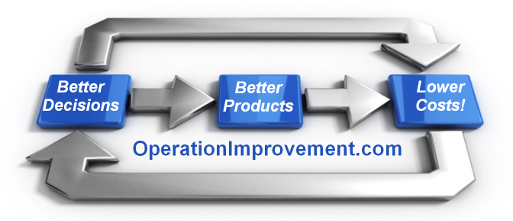Archive
Ask Grok!
If you have not yet tried it, visit: Grok.com.
Grok says:
Zoom has the largest user base among video chat tools, with over 300 million daily active users as of 2024, significantly outpacing Microsoft Teams, which reports around 320 million monthly active users.
Other platforms like Google Meet, Cisco Webex, and Slack have smaller user bases, with Slack at around 32.3 million daily active users, and no recent figures for Google Meet or Webex surpassing Zoom or Teams.
Zoom’s dominance stems from its ease of use, accessibility (no account needed for joining), and widespread adoption during the 2020 pandemic, growing from 10 million to over 300 million daily meeting participants in a few months. Teams, while popular in organizations using Microsoft 365, has a more complex interface and is often used for internal collaboration, which may limit its reach compared to Zoom’s broader appeal for both personal and professional use
Small Business VOIP Phone Line
If your business has used Skype, Google Voice, or Amazon Chime Business Calling services; you are aware that these services are changing and some are even being phased out by the big three cloud companies.
I am presently evaluating Zoom phone as a replacement for these services. Although Zoom is primarily known for its video calling, conferencing and webinar features, Zoom phone adds features reminiscent of products like Microsoft Teams at an affordable entry price. The service scales from a $10/month per phone number to a multi-extension/multi-user PBX in the cloud with a limited set of call center features.
The cell phone app for Zoom coexists quite well with your phone company number and services. A distinctive ring and caller ID makes it easy to see a Zoom caller versus a regular cell caller. A corporate number can be routed to a particular company user, and can multi-ring multiple users or multiple devices belonging to the same user.
Company work hours can be configured and after-hours calls can be routed to a voicemail. Voicemail notifications “pop” on all connected devices, and voicemails can also be automatically transcribed into text and emailed.
You might need a little help porting over existing numbers and configuring any advanced features. Zoom expects you to read up on and follow their processes, and these things are a little tricky at first.
For larger organizations, you may want to step up to enterprise cloud contact center solutions like Amazon Connect. For small business, this service is shaping up to be a serious contender for customer contact anywhere and anytime.
Fractional Hiring” Expertise without Full-Time Cost
It`s not just Fortune 500 companies that bring in expertise for a part-time need or on a project basis. Small businesses can also profit from this “Big Business” strategy. The motivation can be a need to implement major operational and technology re-structuring, or it may be to offload necessary business administrative and support functions.
See this article: “Fractional hiring is a strategic approach where businesses engage professionals part-time or on a project-specific basis…” (How fractional hiring creates a paradigm shift in the workplace)
If some necessary tasks are not a part of the company`s core expertise and mission or if it is important to “keep the ship sailing” while changes and improvements are made, then this Division of Labor approach to staffing up is worth considering.
Any enterprise large or small might consider offloading their bookkeeping and financial reporting to a specialist. Or, they may want assurances that they are getting the most benefit from their investments in computer and information technology.
As a business grows, they will want to benefit from “Business Intelligence” and “Data Analytics” that extracts actionable insights that go beyond what is captured in the monthly P&L, Balance Sheets and cash flow reports.
Larger businesses will want to shop for “best practices” when it comes to customer contact strategies. They will want the best tools for recalling past interactions with customers and for creating a plan that anticipates and serves those customer needs.
Finally, established businesses may have concerns that they are under-performing their potential and they want to make rapid transformational gains – we call that Operation Improvement.
Is it Cost of Goods or Operating Expense?
Expenditures should be filed in their proper category and proper month. These expenses typically show up in one of three places in the Profit and Loss (the P&L) Statement.
Imagine, for a moment, a business that buys cell phones for $1000. each and then sells those phones for $1000. 100 phones = $100,000 in Revenue (Sales). 1000 phones = $1,000,000. What is wrong with this picture? Only the cell phone maker makes money and the sales total is really their revenue and not yours.
Did you find a physical place or internet store where customers find it easier to do business? Was there special software or cosmetic customization of the phone? Are you obtaining wholesale prices because of your purchase volume? (You would be helping the manufacturer reach and service end customers!) No!
This nonsense example simply produces a grossly inflated “Revenue” number and, of course, is a recipe for failure.
If you add value with each sale from your inventory, you can mark up your cost. The selling price could be $1400. and the cost might be $1000., or even less with wholesale volumes. This margin of $400. is the Gross Profit on each phone, and this calculation needs to be reflected in the bookkeeping.
This is where cost of goods comes in. On a Profit and Loss (The P&L) Statement, that top line revenue number totalling $1400. for each sale is followed by a Cost of Goods line item. The $1000. cost of each phone is totaled into the Cost of Goods line item and then subtracted to show your Gross Profit.
This is an important concept because the top line revenue number essentially contains the sales total for both you and your supplier of inventory! This number soars with increased sales volume, but it is the Gross Profit, the Sales – Cost of Goods difference that actually gives you an accurate picture of the revenue you earned by adding value.
For more on Cost of Goods, see this article: Cost of Goods Sold (COGS) Explained With Methods to Calculate It (investopedia.com)
Ok. So what about those other expenses? Operating Expenses typically appear on the P&L immediately after Gross Profit. This will allow us to subtract those expenses from Gross Profit and calculate a Net Operating Profit.
Non-operating income and expenses typically have their own category, so that the P&L can show the health of the operating business with things like one-time income or expense items set to the side. Take a look at this discussion of operating and non-operating expense: Non-Operating Expense: Definition and Examples (investopedia.com)
There are several variations on this theme, and this web site** has some good examples of the different forms a P&L statement might take. Which one is most appropriate for your business?




